One of the most fundamental types of shoes that you should already have in your closet is a good pair of boots. Whether they are rugged outdoor boots, a good pair of chukkas, or an elevated pair of Chelseas, you need to have one or all three of these options for a complete shoe wardrobe.
But just choosing the right pair of boots is only part of the process. You also need to break them in and take care of them so you can stay comfortable at all times. Learning how to break in boots the right way is the first step to keeping your boots the best they can be — here is the best way to get started.
Make quality footwear choices
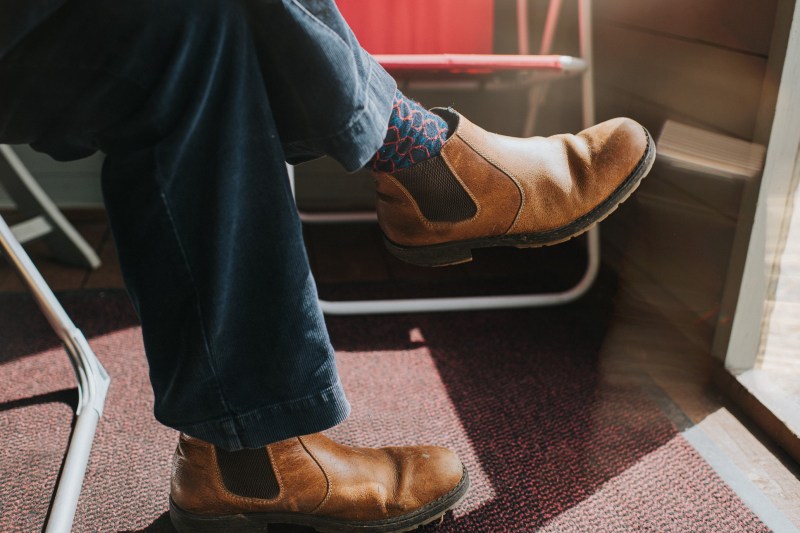
First of all, quality is imperative here. If you spend money on any one thing in your wardrobe, make it quality footwear. Cheap footwear will be made from cheaper materials that will be harder to break in. Also, if you find a brand that fits well, stick with it: Most companies have a last — the form they build their shoes or boots on — that they keep around forever, so if one pair fits you well, most others from that brand should work for you, too.
Be sure to start with the right size. If you’re just starting to wear boots, are getting into outdoor recreation, or have just started a job in or adjacent to the construction industry, this is the time to go to an actual brick-and-mortar retailer. Talk to a knowledgeable salesperson about your needs, ask to be properly measured, and learn about what to expect from the fit. They’ll be able to help you get a better fit if your feet are narrow, wide if you have arch problems, etc. Sure, once you’ve found a boot that fits and is comfortable, you can get away with ordering variations of that style online over and over again.
The importance of leather over faux
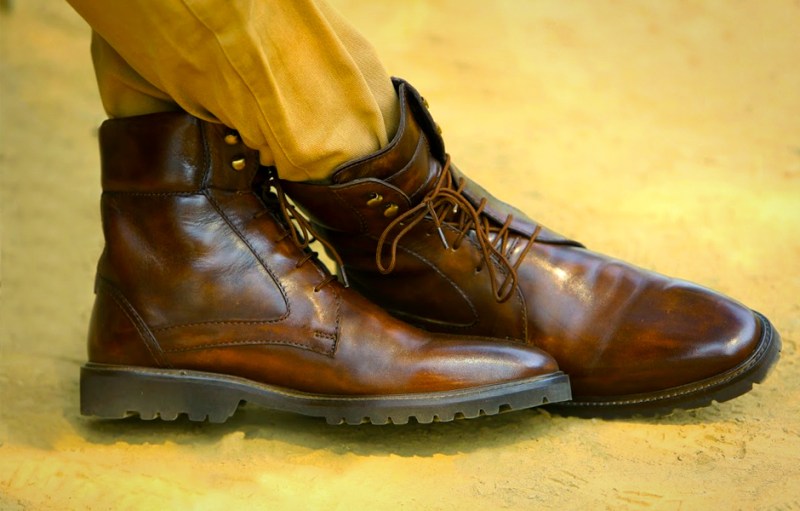
The real reason that you are going to want to get real leather for your boots instead of faux leather is because real leather is made from genuine animal hides like cattle, buffalo, or oxen. Boots made from genuine leather absorb the products intended to soften and protect them. The leather boots also will form to your feet and last much longer than ones that are made from synthetic leather.
Faux leather is made from a plastic base, coated with wax, and artificially dyed to resemble real leather. The real deal is truly unique and makes breaking in boots easier.
Wearing boots a little at a time
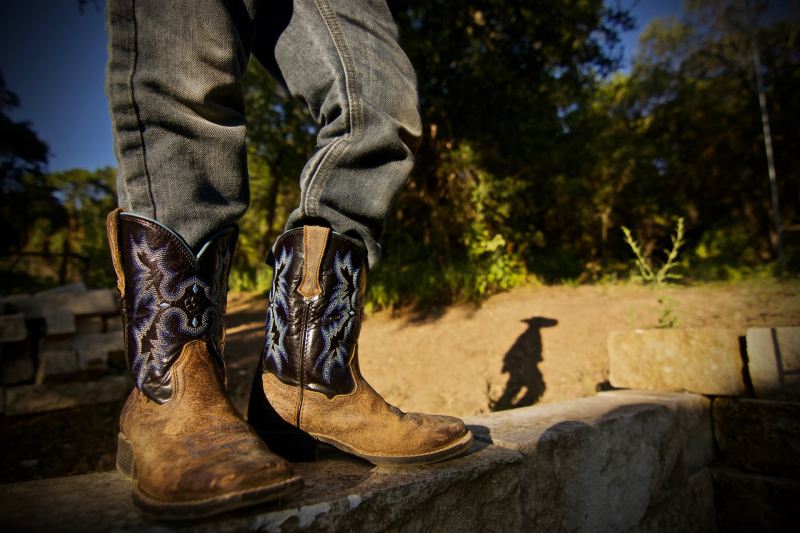
Once you’ve brought your new pair of boots home, the hard work begins. Put on a nice thick pair of socks. If you’re already planning on wearing beefy boot socks with them, pull on another thinner pair under the boot socks. Put on the boots. Now, this is the tricky part: Hang out. Seriously. Watch TV. Make dinner. Play with the kids. Do a (quick) run to the grocery store. Don’t stay completely stationary, but again, don’t head out on any major hikes.
The simple fact is that wearing them around the house for a few hours a day for a week or so provides some heat and moisture to help the boots mold themselves to your feet. This is especially helpful if you can break in shoes during summer’s heat and humidity.
“Spending time in the boots is really what’s needed to break in a new pair,” said Heidi Dale Allen, vice president of marketing for Nikwax, which makes high-performance waterproofing, cleaning, and conditioning for all your best outdoor gear. “I like to wear mine around the house over the course of a few days for a slow break-in before I wear them outside or for a long period of time. Plus, if I decide they don’t fit, I can still return them because I haven’t worn them outside!”
Adjust the laces
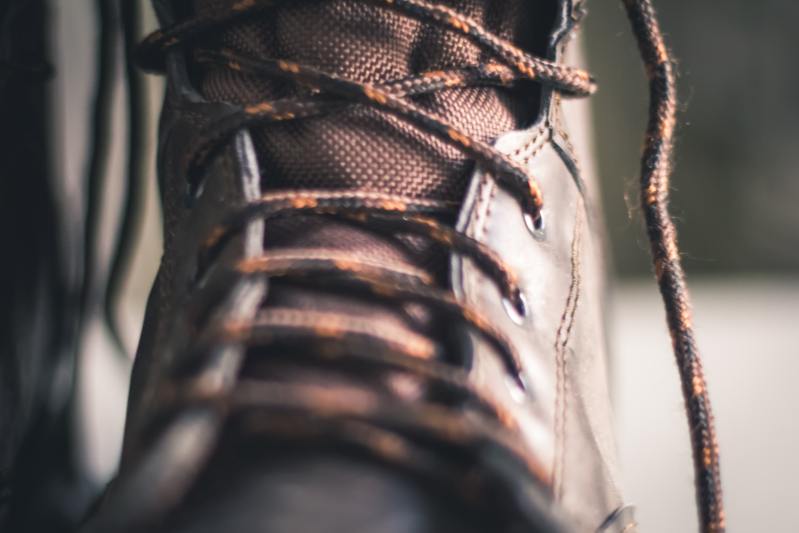
Have you ever watched one of those movies where they show a woman being laced up into a corset? Doesn’t look very comfortable, does it? So imagine that the corset is being laced around your feet. In effect, without some lacing tips, shoes tied too tightly (or too loosely) can end up causing blisters. Places where shoes are too loose can also be a problem as they allow too much movement, and that part of your foot may be rubbing against the side of the boot, causing a blister.
Other methods of breaking in boots

Soaking boots in water
A cautionary note here. If you just spent big bucks on a pair of heritage leather boots, you may want to avoid this step: Boots made in a traditional manner with natural materials (like cork) may get ruined by being soaked in water. Check the product description. Some military and hiking boots are made from synthetic materials (in addition to leather), so this method is safer for them. Soak the boots in a bucket of warm water for 30 minutes to an hour. Dry them lightly with a towel, then wear them around the house, again with thick socks.
The blow-dry method
The heat from a blow dryer can help make leather more malleable, but it can also dry it out or even melt other construction materials. Apply this method sparingly: It’s particularly helpful for hitting specific spots, say, where a toe may be rubbing or an ankle. Don’t get the leather super hot, just slightly warmer than body temperature, then use your fingers to push and prod the spot into shape.
Here are some boot-stretching methods that we don’t recommend
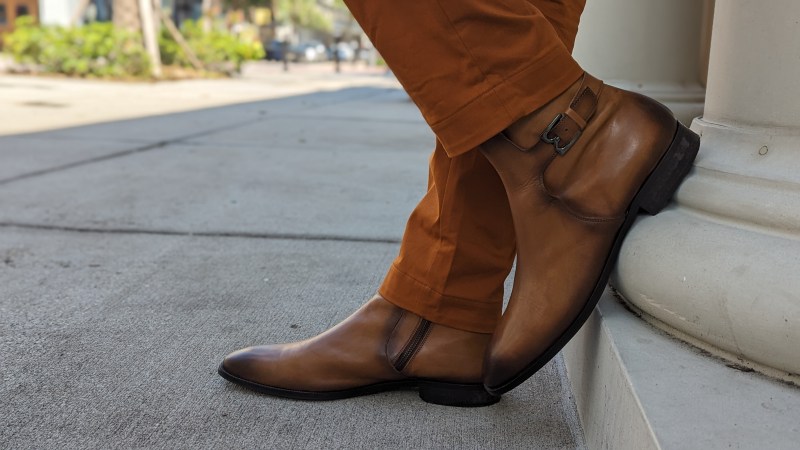
Shoe-stretching spray
OK, can we just say upfront that this product makes us nervous, although many have sworn by it? These sprays are often alcohol-based. Is it a good idea to soak your skin with alcohol? Sure, briefly, to kill germs, but not like you’d soak in it. That can’t be great for your expensive leather boots, either. As with the water soak, these sprays wet the leather so that it can stretch and mold to your feet, and similarly, the idea is to apply the product, put on a pair of socks, and wear them around the house for a bit.
Boot stretchers
Again, we know people who have used these and swear by them, but unless the stretchers are shaped exactly like your feet, we’re not sure that we see how they can help. They may give you some room from toe to heel or across the boot, but are they going to compensate for your big ankles, your extra long toes, or your bunion? Not really.
Cold packs or ice
We’re fully admitting that this might be an internet urban legend, but it’s one that just might make sense. Unfortunately, it may also require a lot of room in your freezer (On the other hand, winter is coming). Allow a cold pack (the squishy ones you can use for an injury, not the hard ones for the cooler) to melt.
If you’re feeling particularly confident, fill a sturdy plastic bag with water (one that really seals and won’t end up leaking all over your boots). Push the pack into place in the boot wherever you need more room; i.e., in the toe box, or heel. Use a towel or rag to stuff the shoe and hold the pack in place. Freeze the boots. As the liquid in the pack freezes, it will expand, stretching out that part of the shoe.
Keep your boots clean and some products to try

In any case, as your boots begin to fit your feet, be sure to take good care of them. Mud, dirt, and salt can suck oils out of leather, so be sure to keep them clean with regular brushing and occasional leather shampoo. After cleaning or on new boots, use a good leather conditioner or mink oil two to three times a week, and focus on those areas that feel tight.
“Conditioner is a great product to use on new boots,” said Allen. “It softens the leather a bit and adds protection while maintaining breathability. When your new boots start to show some wear and dirt, Footwear Cleaning Gel is great for removing salt, dirt, etc.”
If you can, avoid wearing your new boots every day. It’s a good idea to give boots a chance to rest and allow perspiration to dry thoroughly from the inside out. If they do get wet in rain or snow, don’t dry them on a hot surface like a heat register or radiator (or let them get too close to a fireplace or woodstove). Those surfaces are too hot and, again, not good for the leather. It’s better to stuff them with paper or a towel and allow them to dry at room temperature.
Finally, trust the professionals. Ask your boot seller or cobbler for tips on boot care, and work with them to occasionally restore, resole, and rebuild your comfortable, broken-in boots.
Nikwax Conditioner for Leather
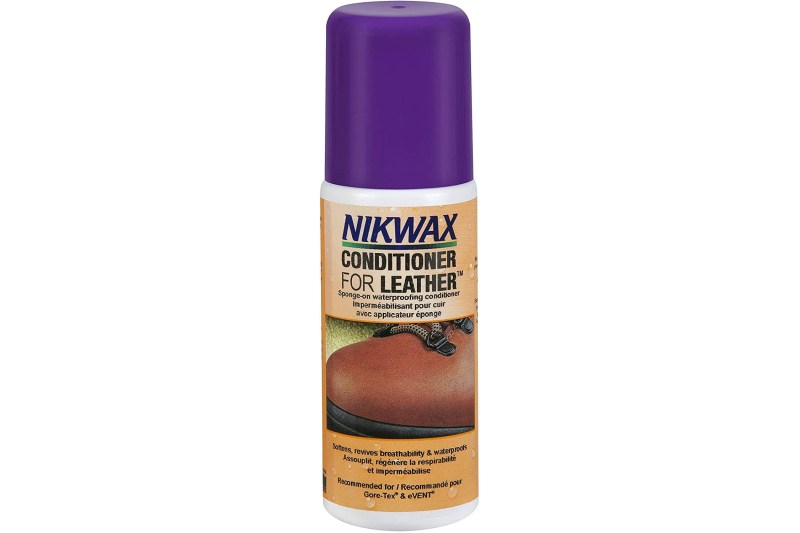
Nikwax’s water-based formula is absorbed into the leather to condition and waterproof leather by replenishing tanning agents and lubricants. It also adds durable water repellency to smooth leather, maintaining breathability. It is non-flammable, contains no harmful solvents, and is free of volatile organic compounds or fluorocarbons.
Nikwax Footwear Cleaning Gel
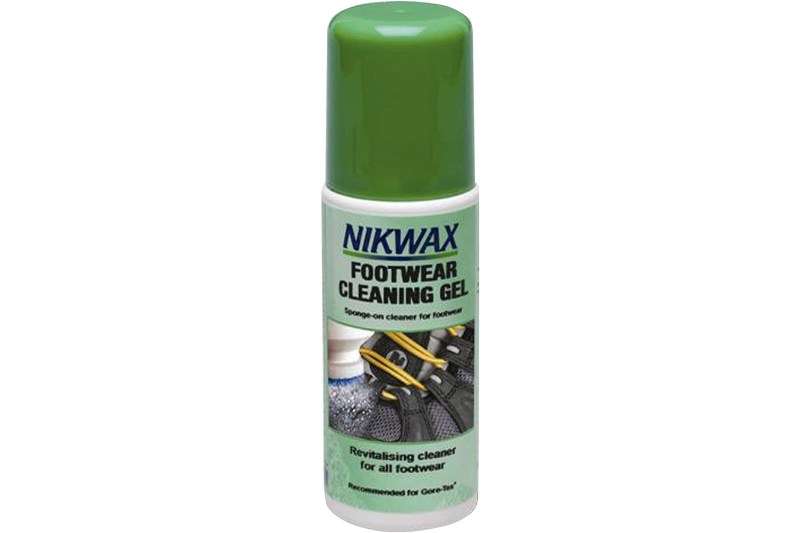
Dirt on the surface of your boots can attract water, negating any kind of DWR coating. This gel cleans dirt and removes contaminants while revitalizing water repellence, causing water to bead on the outer surface.
How to properly store boots
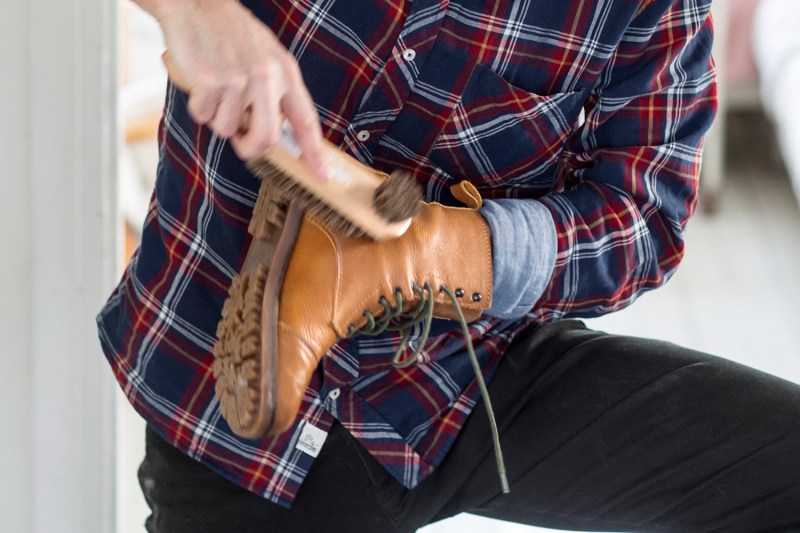
Once you’ve got your boots broken in, you’ll want to make sure they stay in top condition, and that includes when you’re storing them for the season. When boot season ends and the warmer weather comes, follow these steps to clean your boots before putting them away for an extended time.
- Wipe the boots down with a damp cloth to remove any dirt or surface moisture.
- Using a soft brush, brush the boots to get rid of any dirt that may scratch the leather during cleaning.
- Wipe them again with a damp cloth and let them dry at room temperature.
- Once they’re dry, polish and condition the boots with leather conditioner or polish.
Once the boots are clean, they’re ready for storage. If you have closet space, store the boots on a shoe or boot rack with the soles flat to help them keep their shape. For taller boots, help them keep their shape by using shoe trees, rolled-up magazines, or cardboard to keep them standing tall and prevent them from getting creased.




